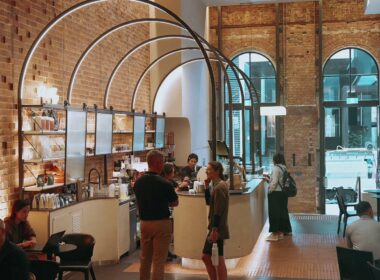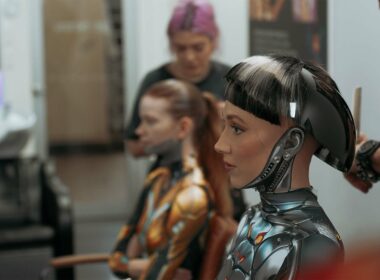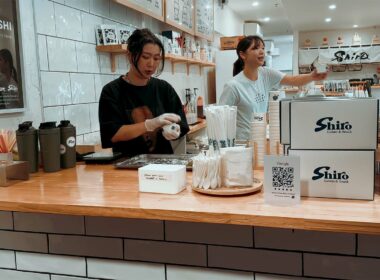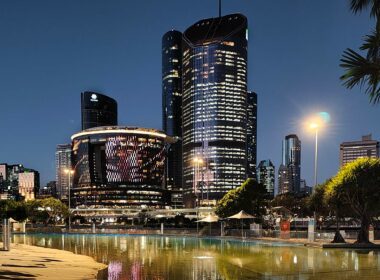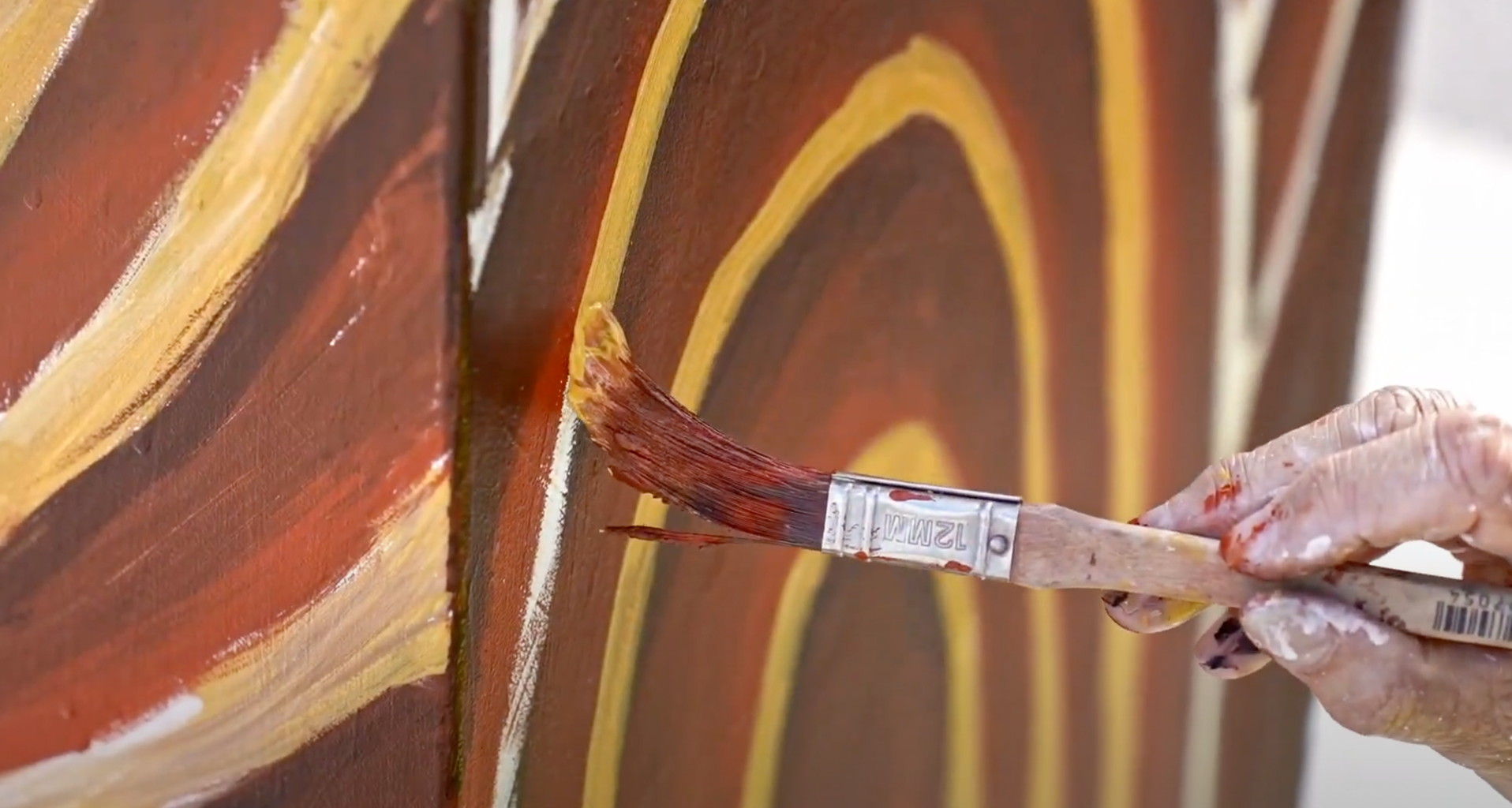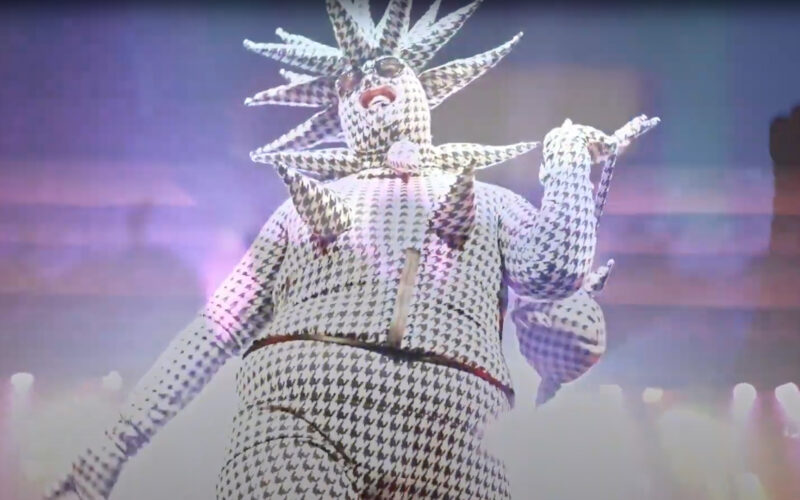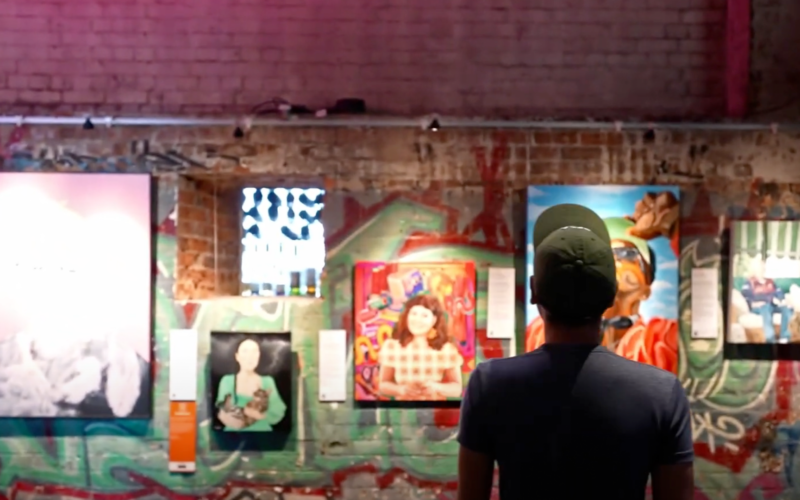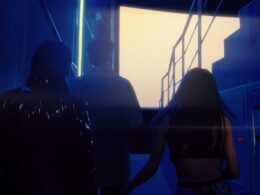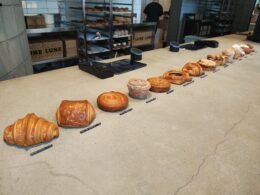It’s not like me to arrange a rendezvous at a toilet block with someone I’ve never met before; today I’m making an exception.
I’m meeting public art curator Beth Jackson next to one of her recent commissions (appearing on said toilet block) to discuss the importance of curation, art’s existence everywhere in Brisbane and the legacy she continues to build.
“How excited can one get about curating art for toilet blocks, right?” she laughs. “But then you see that they’re situated in Musgrave Park, one of the most important cultural sites in Brisbane”. This iconic green space that borders West End and the city is home of the Jagera Arts Centre, host for NAIDOC Park Day, Brisbane Pride Festival Fair Day and the Paniyiri Greek Festival, as well as a site for regular political activism.
We’re chatting in the shade near one of two toilet blocks here that have played canvas to commissions by Beth. This piece, by Koorie artist Gert Geyer, pays homage to historic Kurilpa, the former Aboriginal camping ground where we’re now sitting and the waterways that once flowed here. Gert completed this work with Shaniah Thomason, daughter of traditional owner Deborah Sandy.
“There’s huge community ownership around this space and so many stories to tell, so it’s a great opportunity for an artist to make those visible.”
“All our cities are built on Aboriginal pathways, ceremonial sites, fighting grounds, birthing trees. It’s still there, it’s just invisible. So public art is one of the few ways we can make that visible again, where we can actually draw attention to those songlines.”
Through her consultancy Artfully, which this year celebrates ten years, Beth endeavours to embed art ‘meaningfully within social contexts and built environments’. This includes temporary installations and projections across Brisbane, as well as permanent architectural designs in the CBD.
“When I first started in public art, the first response was ‘what a waste of money!’” she tells me, speaking about attitudes twenty years ago. “There was a lot of public hostility, people would just think you were crazy hippies. And even the art world looked down on it, it was like ‘oh no the proper art happens in the gallery; that stuff in the park that’s just some hokey community thing it’s not real art’.”
Not wanting to be confined to a white box, Beth left her job as a curator of the Griffith University Art Collection (after influencing the creation of its first dedicated gallery space) and moved further into consultation and curation.
“It was a really exciting time,” she says. “I feel like I created the job as a public art curator here because at the time there were a lot of public art project managers and artists but there was a missing layer; who actually scopes these opportunities? Who has the vision for what the artwork is about with its relationship to place?”
“One of the first projects I worked on was Melbourne Street Boulevard and the UFO in West End. It was such a fun project to do. West End were really against all of this streetscaping that was coming up, like Southbank was invading them. They didn’t like it. Public art can often look like civic jewellery, a posh piece of rubbish that’s just been plonked there by some wealthy developer. So it was a real challenge to get an artwork that they were happy with and we got [local artist] Luke Roberts to do this UFO and it was just perfect!”
As well as helping to keep West End weird and embed art across the city, Beth is also the project manager of Artforce, a Brisbane City Council (BCC) initiative that every single person here is likely to be familiar with. This decades-long project has seen more than 1200 traffic signal boxes painted with original artworks from over 5,000 volunteers all over Brisbane. In their words: ‘Artforce is bringing the colourful stories of Brisbane communities to the streets, one intersection at a time!’. It’s an incredible way for locals to create something for their community that tells a story, highlights their neighbourhood or sends out an important message.
However it’s not just locals who want a piece of the public pie. Beth tells me, “So many artists are craving public art commissions. It’s gone from councils trying to educate their communities and lead the way to the community banging on councils’ doors going ‘where’s our public art?!’. So councils are really feeling the pressure to do more, which is great!” As wall murals, signal boxes, corporate façades or UFOs become permanent fixtures in our urban environment, events like the Brisbane Festival, Botanica and Brisbane Street Art Festival are helping the city embrace temporary art.
“I love permanent public art. But temporary art refreshes the city, it gives more work to more artists. You don’t necessarily want to be saddled with an object that has to be maintained for twenty years.”
Beth highlights BCC’s Outdoor Gallery project, which features “lightboxes, projections, billboards and vitrines that they change over regularly – like you would any gallery program – and it really helps to build that ecology of public art.”
It’s evident that we aren’t talking about a fad here. Beth and I agree that Brisbane is in the middle of an exciting cultural shift, where pride of place is becoming more vocal and the art industry is responding to that. We’re officially on the road to the Olympics, which in itself signifies that this city is not to be overlooked by its east coast counterparts. And with that comes the potential for some iconic public art projects.
“It’s just one of those once in a generation opportunities that’s never going to come around again. Maybe we’ll actually get some serious money to do something really good. I would love to be able to think about that and really be a part of it.”
Beth goes on to tell me how money from the Commonwealth Games helped to fund BCC’s ‘Botanica: Contemporary Art Outside’ event – a popular nighttime exhibit that has attracted almost 200,000 visitors since its inception in 2018.
“It’s not just the event itself, it’s the legacy you get after these events,” she says.
So what of Beth’s legacy? I ask her how she feels whenever she walks past all the artworks that she is responsible for commissioning. And for a full thirty seconds is silent in contemplation. Eventually responding: “It’s kind of a scary feeling”.
“To think that I have been part of building parts of this city and making decisions that put public money into giving something to a place that people should enjoy and see as meaningful… And most of the time I think that’s a great thing to have done because I think I’ve helped improve Brisbane and I see all the positives from it.”
“You realise that we grow up and we become the decision makers and we take charge. You should never doubt the fact that you are an influential being; your life does count and you have effects and consequences.”
“So I feel like I really come to face myself when I see these works in the public realm and it’s awesome and strange and scary at the same time.”


